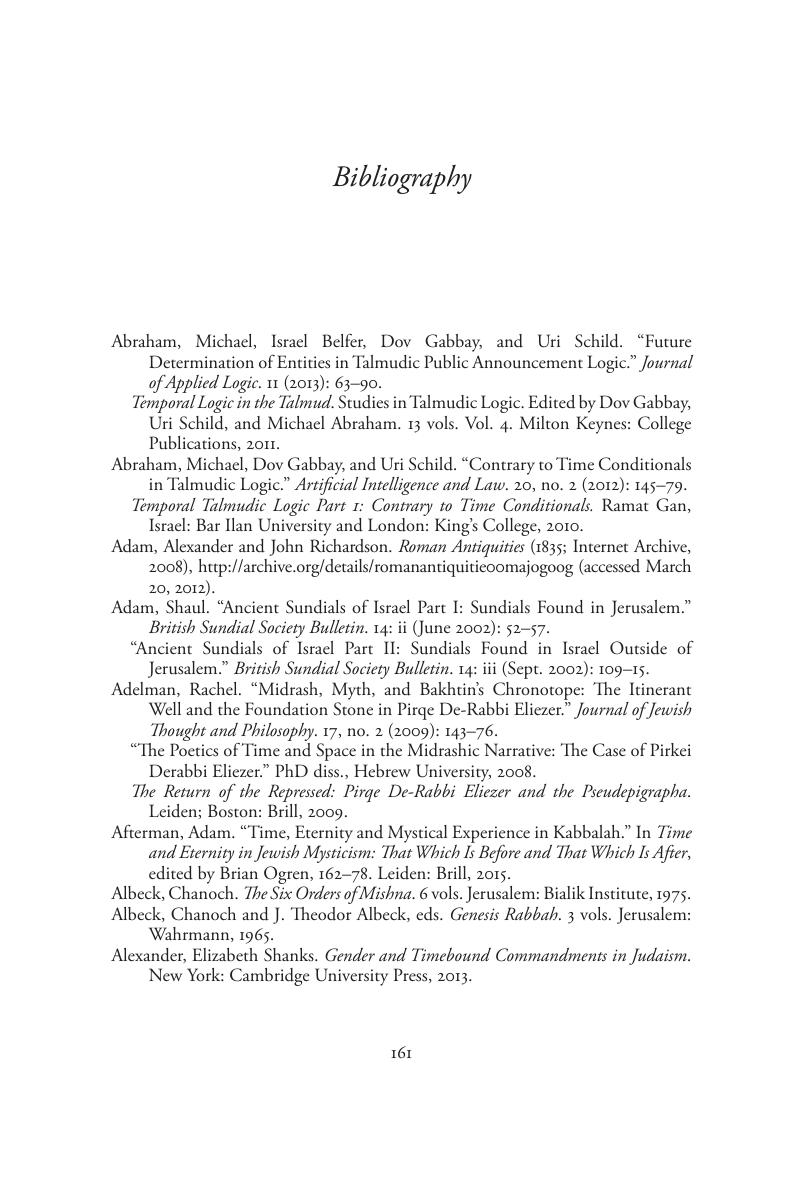Book contents
- Time in the Babylonian Talmud
- Time in the Babylonian Talmud
- Copyright page
- Dedication
- Contents
- Texts and Transliteration
- Acknowledgments
- Introduction
- Chapter 1 Spatial, Temporal, and Kinesthetic Concepts of Simultaneity
- Chapter 2 Divine Temporal Precision and Human Inaccuracy
- Chapter 3 Being Fixed in Time
- Chapter 4 Retroactivity Reimagined
- Chapter 5 Matzah and Madeleines
- Epilogue
- Bibliography
- Index
- References
Bibliography
Published online by Cambridge University Press: 01 February 2018
- Time in the Babylonian Talmud
- Time in the Babylonian Talmud
- Copyright page
- Dedication
- Contents
- Texts and Transliteration
- Acknowledgments
- Introduction
- Chapter 1 Spatial, Temporal, and Kinesthetic Concepts of Simultaneity
- Chapter 2 Divine Temporal Precision and Human Inaccuracy
- Chapter 3 Being Fixed in Time
- Chapter 4 Retroactivity Reimagined
- Chapter 5 Matzah and Madeleines
- Epilogue
- Bibliography
- Index
- References
Summary

- Type
- Chapter
- Information
- Time in the Babylonian TalmudNatural and Imagined Times in Jewish Law and Narrative, pp. 161 - 178Publisher: Cambridge University PressPrint publication year: 2018



